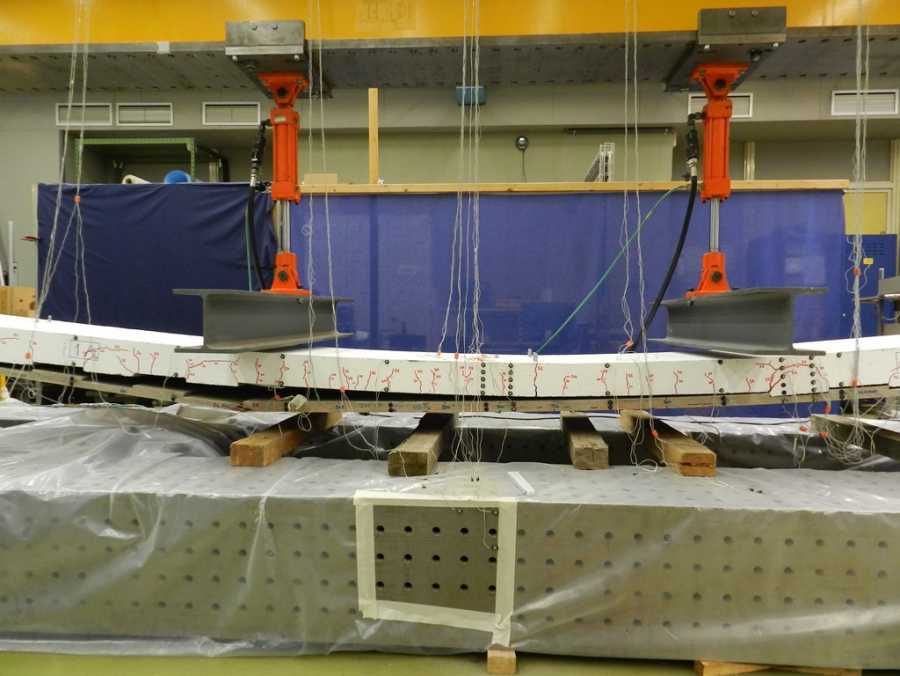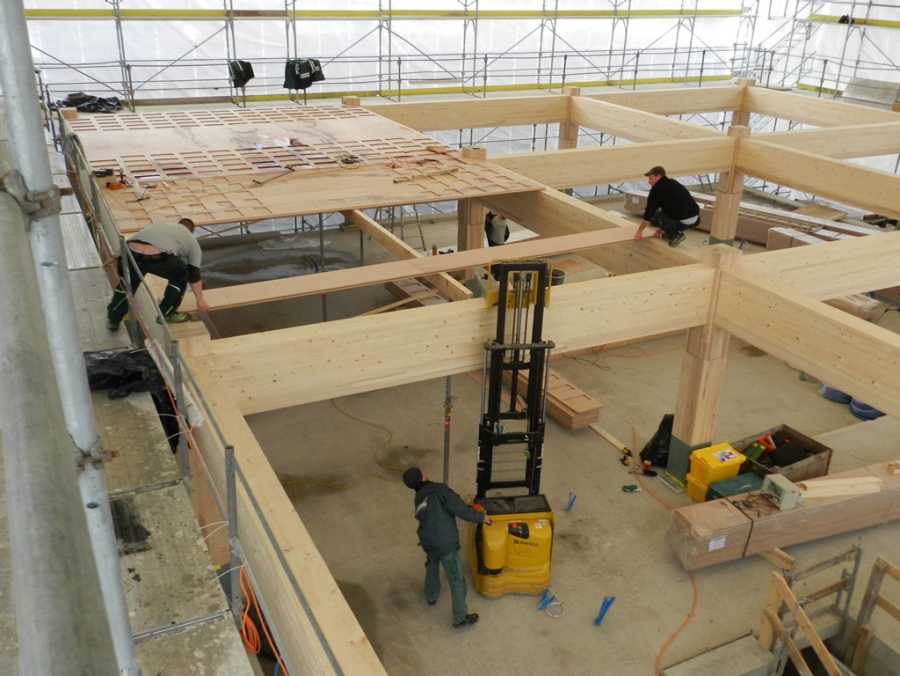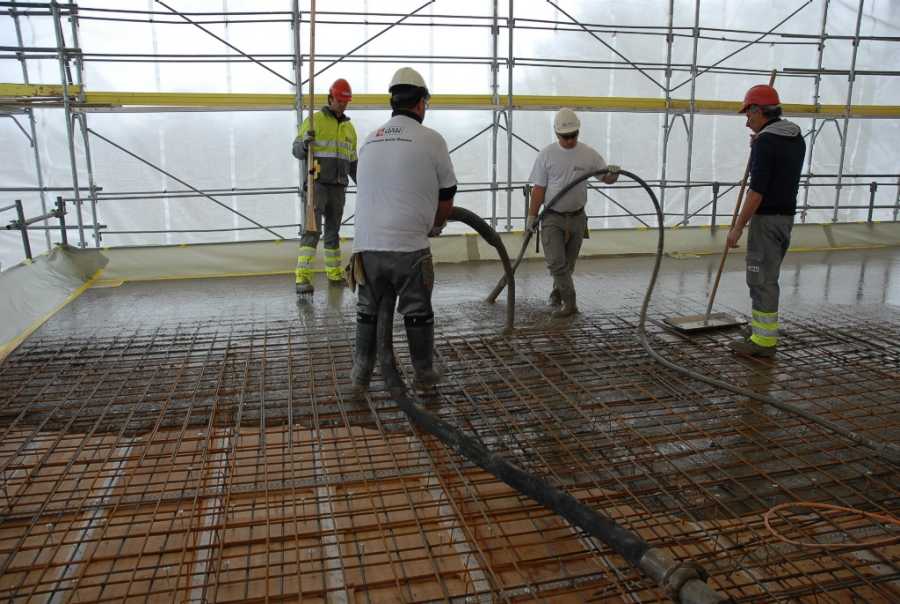Timber-concrete composite slab using beech wood plates
The higher strength and stiffness properties of beech wood, as compared to most softwood species, are well known. In Europe, beech wood is available in large quantities but typically used as either fire-wood or for non-structural applications.
Currently, the Institute of Structural Engineering is involved in a large long-term research focused on sustainable, innovative and reliable timber structures that use beech wood, in particular laminated veneer lumber. The mechanical properties of laminated veneer lumber (LVL) made of beech wood, which are higher and more reliable than spruce, allow the development of an innovative timber-concrete composite slab made of a 40mm thick LVL beech wood plate (BauBuche) and a 160mm thick concrete layer.
Notching is used for connection, instead of steel fasteners. The timber and concrete are connected with 15 mm deep notches in the LVL plate, which transmit the shear force through the compressive contact of the two materials. The behaviour of the composite slab relies on the compressive capacity of the concrete and the tensile capacity of the LVL, where the LVL plays a similar role as the reinforcement in reinforced concrete. The structural performance of this system was evaluated with a series of experiments. The results demonstrated that this type of timber-concrete composite system was able to reach high load-carrying capacity and stiffness.
The novel timber-concrete composite slab made of beech wood was implemented in the ETH House of Natural Resources. The LVL plate acts as both formwork and the tensile load carrying component, and remains a visible surface. The construction process of this composite slab was similar to a normal reinforced concrete slab. Firstly, the beech plates were installed on the timber frame. Then, the reinforcing steel for fire resistance was placed, and lateral formworks were fixed along the perimeter of the slab. Finally, the concrete was poured. After the construction of the slab, several dynamic tests were performed. Furthermore, the deformations will be monitored in-situ during several years.
Pictures composite slab
-

Tests on a slab at ETH. (Photo: ETH Zurich) -

LVL-plates are used as formwork and reinforcement. (Photo: ETH Zurich) -

Concrete is being poured on the LVL-plates. (Photo: ETH Zurich)